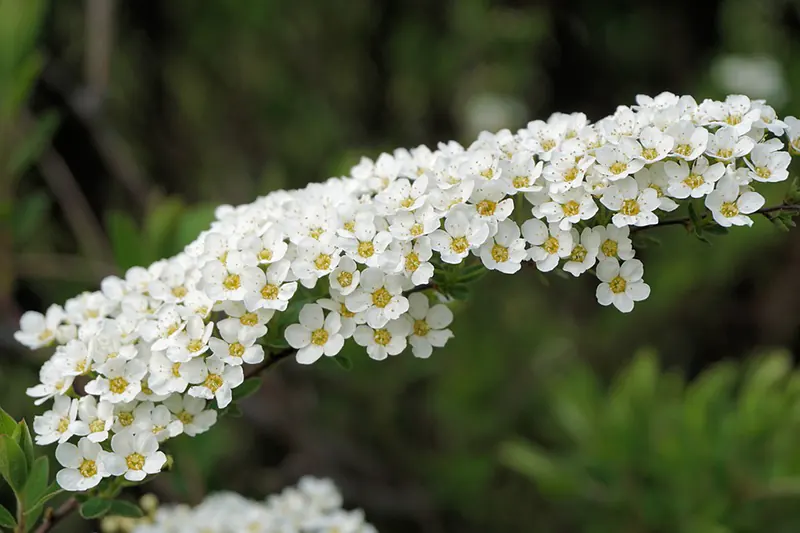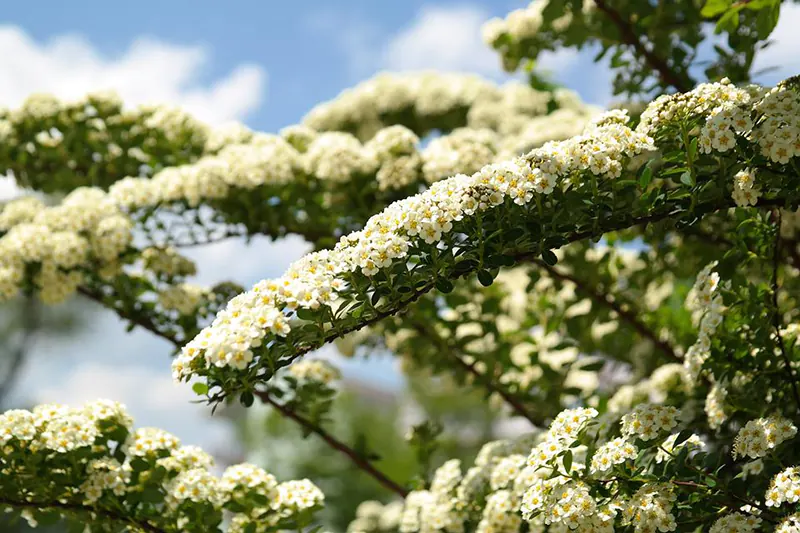How to prune a Snow Rose bonsai
The Snow Rose (Serissa japonica) is a shrub that grows to about 4 feet high and produces tiny white flowers. It’s native to South East Asia and is also called the Japanese boxthorn or Tree of a thousand stars. There are different cultivars of Snow Rose, including the Pink Snow Rose, Pink Mystic, Variegated Pink, Variegata, Snowflake, Snow Leaves, Sapporo, Mount Fuji, and Kyoto.
The plant used to be called Serissa foetida (foetida means bad smell in Latin), referring to the strong and unpleasant odor it releases when its roots or bark are cut. That name is no longer approved, for obvious reasons!

Why grow a Snow Rose?
The plant has small dark green leaves and rough, flaky bark that makes it look older, even if it’s young. It grows very well indoors. Because it produces beautiful tiny blossoms all year round, it’s a popular choice for bonsai. Like any other plant miniaturized by practitioners of ancient Japanese art, it needs careful cultivation.
The little trees are grown in small containers, and their roots and leaves are shaped and pruned to direct their growth and keep them small and healthy. They sometimes have very attractive exposed twisted roots. 
Pruning a Snow Rose Bonsai
Your Snow Rose bonsai will lose its shape if you don’t prune its leaves and branches regularly. Early spring is the recommended time to prune your bonsai tree for proper care. Every 2-3 years, you’ll also have to prune the tree’s roots when it will need repotting. Here’s how to do it:
Step 1
Prune leaves with your fingers by pinching them with your thumb and forefinger and pulling them off the tree. Pinching the leaves off regularly will help minimize the number of weaker shoots that die off. Pinching will help side buds to develop, which will make your bonsai tree bushier.
Step 2
Cut branches back to keep your bonsai tree small and in the shape you want it to be. Black branches are rotten and should be pruned as soon as you notice the discoloration.
Step 3
If you notice sprouts growing at the bottom of the tree, trim them off with sharp scissors or pruning shears. If left, they will stunt your tree’s growth.
Step 4
Your bonsai will need repotting with a well-draining bonsai soil mix every 2-3 years to make sure it has enough good soil to sustain it. This should be done in early spring when the tree can recover quickly from having its roots cut back. Snow Roses don’t like to have their roots pruned. Only do it when your plant is root-bound and clearly needs repotting. Only do it when the roots have started growing in a circle around the inside of the pot.

Basic care of your bonsai
Caring for your Snow Rose bonsai takes time and patience because it can be a bit difficult to keep it thriving. Just bear in mind that it doesn’t like being moved and is fussy about fluctuating temperature. It should always be placed where the temperature is between 50 and 60 degrees F or 10 to 20 degrees C. The Snow Rose won’t tolerate frost.
The right pot
The Snow Rose bonsai grows best in a glazed pot. Since the plant has a roundish crown, an oval pot is more suitable than a rectangular one unless it has rounded corners.
Enough light
Plants need sunlight to survive, including for photosynthesis. Your Snow Rose bonsai should be placed where it can get bright light or even in front of a window to get direct sunlight. You can also use grow lights for your tree if the inside of your home is not light enough for it to thrive.
Watering well
The roots of your Snow Rose bonsai must always be moist. However, it’s equally important that you don’t over-water the tree. Over-watering can cause root rot, and so can using inferior quality soil to plant it in. If the tree doesn’t get enough water, the leaves will discolor and fall off. If you notice that the tree is dropping leaves, decrease your watering slightly. Remember that the water you use must be neutral, not overly alkaline or acidic.
Fertilizer
Feeding your Snow Rose bonsai tree with organic fertilizer with a low nitrogen content every four weeks will provide all the nutrients it needs. You can also use liquid fertilizer, but you’ll have to feed the plant once a week if you do. In winter, you’ll only have to give it liquid fertilizer once a month, as it will be dormant.
Pests
Increasing the humidity will keep pests away from your Snow Rose bonsai. The plant is fairly delicate and can be attacked by spider mites and aphids. You can use pesticides from your bonsai supply store to get rid of the pests.
Shaping
You can wire smaller branches to shape your tree, but bigger branches are stiff and can break quite easily, and the wires easily mark the bark. You can train your Snow Rose bonsai into any shape except the formal upright.

Image courtesy of Jonathan Zander
Conclusion
The Snow Rose is a beautiful and popular Bonsai tree. In its natural state, it’s a shrub, but as a bonsai, it can be grown into a tree by regularly pruning and shaping it. You can make sure it thrives by paying attention to its basic care, including watering, fertilizing, getting rid of pests, and placing it where it gets enough light. From time to time, it will reward you with a lovely display of tiny flowers that start out as pink buds and become snow-white blossoms, which is why it’s called a Snow Rose. This sight alone will make all the effort of growing and caring for it well worth your while.






